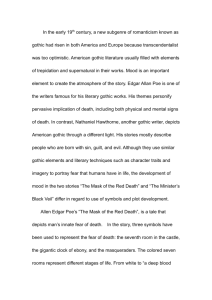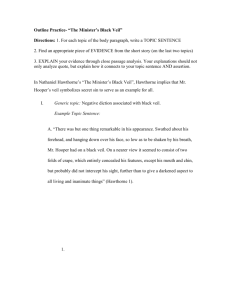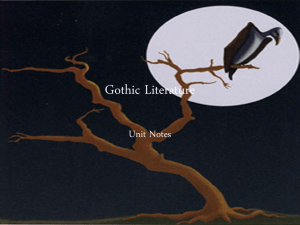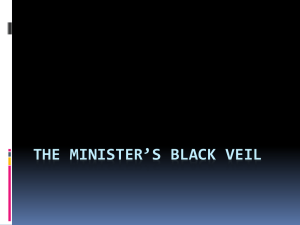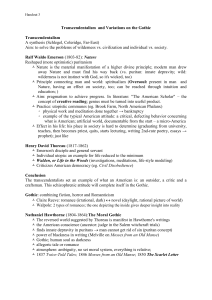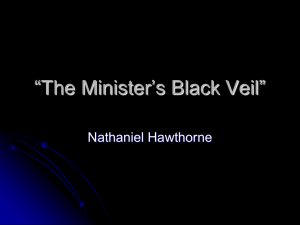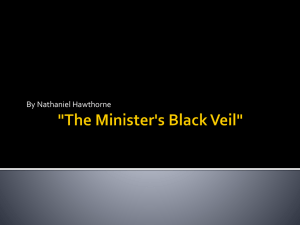red death doc 5.doc
advertisement
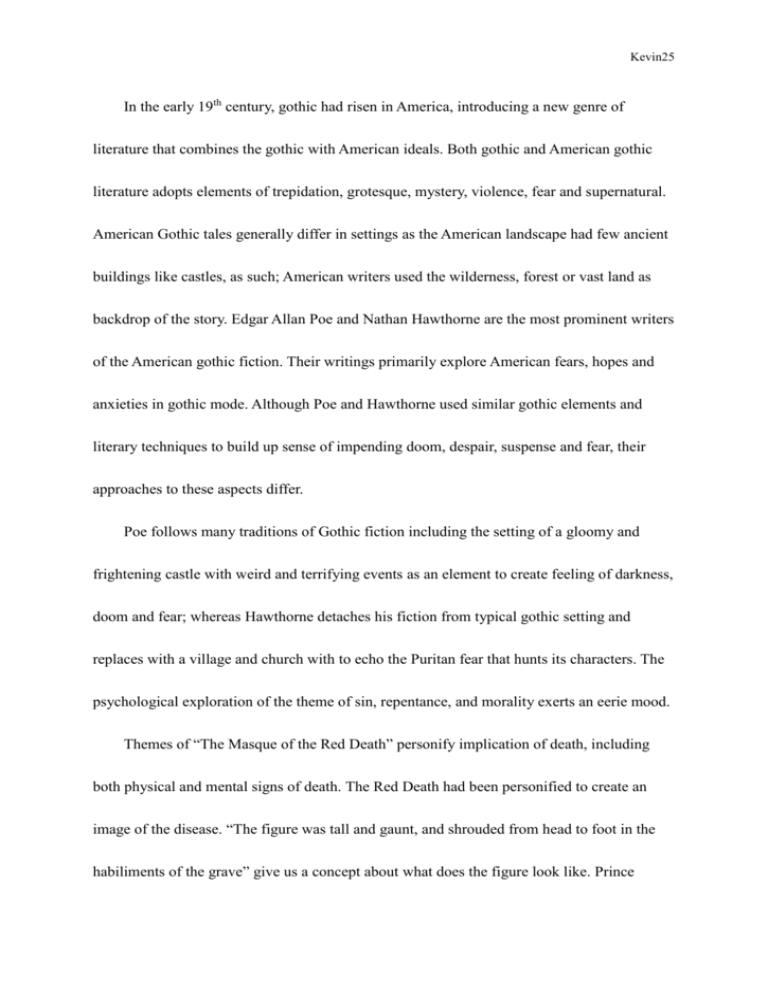
Kevin25 In the early 19th century, gothic had risen in America, introducing a new genre of literature that combines the gothic with American ideals. Both gothic and American gothic literature adopts elements of trepidation, grotesque, mystery, violence, fear and supernatural. American Gothic tales generally differ in settings as the American landscape had few ancient buildings like castles, as such; American writers used the wilderness, forest or vast land as backdrop of the story. Edgar Allan Poe and Nathan Hawthorne are the most prominent writers of the American gothic fiction. Their writings primarily explore American fears, hopes and anxieties in gothic mode. Although Poe and Hawthorne used similar gothic elements and literary techniques to build up sense of impending doom, despair, suspense and fear, their approaches to these aspects differ. Poe follows many traditions of Gothic fiction including the setting of a gloomy and frightening castle with weird and terrifying events as an element to create feeling of darkness, doom and fear; whereas Hawthorne detaches his fiction from typical gothic setting and replaces with a village and church with to echo the Puritan fear that hunts its characters. The psychological exploration of the theme of sin, repentance, and morality exerts an eerie mood. Themes of “The Masque of the Red Death” personify implication of death, including both physical and mental signs of death. The Red Death had been personified to create an image of the disease. “The figure was tall and gaunt, and shrouded from head to foot in the habiliments of the grave” give us a concept about what does the figure look like. Prince Kevin25 Prospero symbolizes prosperity, wealth, and success. This character represents mankind and its inability to deal with the realities of death. Compare with “The Minister’s Black Veil,” the black veil is a parable for sin and morality, inferring everyone share sin and they cannot escape from what they have done because judgment will come for everyone. Hawthorne focuses his horror on the human heart and its potential for evil under various conditions. The black veil radiates a dark and almost sinful mood. Every villager is disturbed and frightened by the black veil on Mr. Hooper’s face. For instance, “He has changed himself into something awful only by hiding his face” and “Our parson is going mad” show that everyone is unfamiliar with the black veil and started to have ambiguous feeling to Mr. Hooper. In the middle of the story, the villagers even feel bewildered about the black veil and belittle Mr. Hooper. It can be interpreted that the townspeople fear the veil as it pointed to their own hidden sin, unsure of their own salvation, and this produced feeling of unease. Although Mr. Hooper’s fiancée had asked him to take of the veil, his refusal caused his fiancée to break the engagement and leave. The veil had separated him from the relationship between his closet relative and woman’s love. Nathaniel Hawthorne used these examples to reiterate the theme in the story, which is people are born with sin and all people sin and it is up to them whether they face their sin or ignore it. Both Poe and Hawthorne make use of symbolism in their works. Edgar Allen Poe’s “The Mask of the Red Death,” is often analyzed as an allegory about man’s futile attempts to stave Kevin25 off death. To create the mood, multiple symbols are used in the development of story: the seven rooms in the castle, color of the seventh room, the gigantic clock of ebony, and the figure. The rooms can be interpreted as seven stages of life and seven deadly sins. The color of rooms may be representative of the life cycle. Also, the imagery of blood and time throughout indicate death is approaching. The seventh room is a connection that leads the reader to the next symbol, which is the gigantic clock. The ebony clock symbolizes a constant reality check that awakes everyone from the superficial joyful status. In the end of the story, the arrival of the figure reminds the reader the theme, we cannot escape death. The other story “The Minister’s Black Veil,” Hawthorne uses the veil as a representation of “secret sin” and the inherent sinful nature of all people. The main theme surrounds the stubborn use of the veil as a parable that suggests everyone is born with sin, guilt, and evil, reflecting the darker side of individualism and the social attitudes and Puritan beliefs of the time. The tone is dark, gloomy, suspenseful and eerie until the end. Mood: The mood of the “The Masque of the Red Death” is a mixture of light-heartedness, suspension, hopelessness, sadness, despair and terror. The story takes place at the castellated abbey of the “happy and dauntless and sagacious” Prince Prospero. The masquerade party for creates a delusion of safety and happiness. Inside the abbey, the nobles take refuge from the Red Death by hiding behind the luxury and safety of the secured walls. They are indifferent Kevin25 of the sufferings of the lower class population outside of the abbey. The abbey can be viewed as a fortress from death. By fortifying the castle, Prince Prospero thinks he can cheat death and prevent mortality. In contrast, the citizens outside of the castle are full of grief, despair and futility. Horror is introduced when the clock strikes. It shifts the mood from light-heartedness to fear. The clock’s chime brings anxiety, irritation to the crowd as the shockingly loud chime reminds the guests of the passage of time and the constant threat of Red Death. Death can strike at any time and coming to all. Black room with “panes were scarlet - a deep blood color” widely emphasized the eerie, mysterious and horrifying gothic moods that frightens the guests, creating a strong psychological horror. Toward the end of the story, a moribund new guest with his face masked appears in the middle of the party and killed everyone in the castle. His appearance strikes a note of "terror, of horror, and of disgust." The figure is "shrouded from head to foot in the habiliments of the grave." His mask is made from corpses died from the Red Death and to create more horror, his entire outfit is sprinkled with blood and "all the features of the face were besprinkled with the scarlet horror." The words used to describe the masked intruder effectively cast an intense fear of death. In contrast, Hawthorne depicts gothic moods in a different light. The entire story is filled with dreadful suspicion and suspense. The mood suspense and mystery is introduced when Mr. Hooper comes in wearing a black veil. This creates a stir among the townspeople, who Kevin25 start to speculate about his veil and its significance. Later in the story, the townspeople are uncomfortable with the veil because it infers that everyone has some form of hidden guilt. Hawthorne develops the mood by emphasizing the theme that people are born with sin, through the main character Mr. Hooper. The writings of Poe and Hawthorne endeavored to examine the conflict of dark struggles between characters and society, between good and evil, the psychological effects of guilt and sin, the supernatural influence, and moral truths. Both writers used imagery to develop the eerie, horror mood prevalent in their fictions and allow the readers have a more vivid picture in their minds when reading. Readers in that era generally see these kinds of work intensively gloomy and pessimistic as they reflect the darker side of humanity and further question human connection to self and to God and Devil. As readers develop a better understanding of Gothic fiction, they have learned to appreciate this literature genre.
